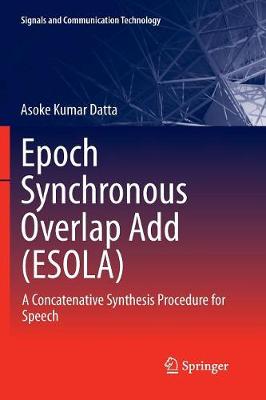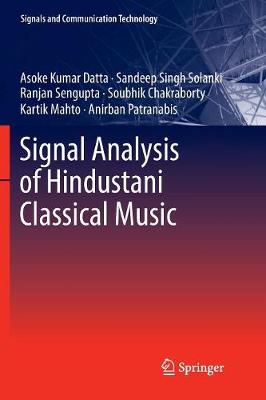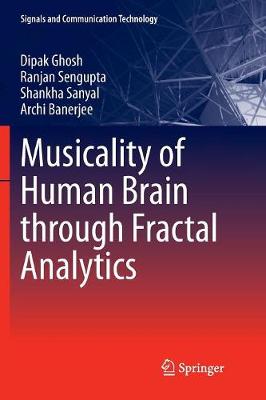Signals and Communication Technology
4 total works
This book presents details of a text-to-speech synthesis procedure using epoch synchronous overlap add (ESOLA), and provides a solution for development of a text-to-speech system using minimum data resources compared to existing solutions. It also examines most natural speech signals including random perturbation in synthesis. The book is intended for students, researchers and industrial practitioners in the field of text-to-speech synthesis.
Signal Analysis of Hindustani Classical Music
by Asoke Kumar Datta, Sandeep Singh Solanki, Ranjan Sengupta, Soubhik Chakraborty, Kartik Mahto, and Anirban Patranabis
Acoustical Analysis of the Tanpura
by Asoke Kumar Datta, Ranjan Sengupta, Kaushik Banerjee, and Dipak Ghosh
This book addresses the acoustic signal analysis and spectral dynamics of the tanpura, an Indian plucked string instrument. In addition, it strives to provide a logical and objective explanation of Indian classical musicians' cognitive experience. Issues of relevance in this regard include the rich, mellifluous sound; the undulation of the loudness; the somewhat cyclical variation of the timbre, which is strongly related to these undulations; and the occasional perception of virtual notes to which no strings are tuned.
The book analyses the materials used in the tanpura, the instrument's simple structure, the intricacies of the lower bridge, and the theory of string vibration with variable string length. Cognitive experiments to provide the basis for perceptual quality assessment, as well as a methodology for ranking, are described. This is followed by acoustic analyses, both temporal and spectral, for sounds produced by male and female tanpuras, for each individual string and the combined one. An important aspect related to the naturalness of perceived sound, namely the intrinsically associated random perturbations, is also discussed. The apparent irregularities perceived in the acoustic signal produced by the tanpura reveal the importance of examining the signal from the perspective of non-linear analysis, an aspect that is also covered in the book.
Given its scope, the book will appeal to students and researchers in the fields of music acoustics, artificial intelligence, and cognitive science, as well as musicians and musicologists around the world.
Musicality of Human Brain through Fractal Analytics
by Dipak Ghosh, Ranjan Sengupta, Shankha Sanyal, and Archi Banerjee
This book provides a comprehensive overview of how fractal analytics can lead to the extraction of interesting features from the complex electroencephalograph (EEG) signals generated by Hindustani classical music. It particularly focuses on how the brain responses to the emotional attributes of Hindustani classical music that have been long been a source of discussion for musicologists and psychologists. Using robust scientific techniques that are capable of looking into the most intricate dynamics of the complex EEG signals, it deciphers the human brain's response to different ragas of Hindustani classical music, shedding new light on what happens inside the performer's brain when they are mentally composing the imagery of a particular raga. It also explores the much- debated issue in the musical fraternity of whether there are any universal cues in music that make it identifiable for people throughout the world, and if so, what are the neural correlates associated with the universal cues? This book is of interest to researchers and scholars of music and the brain, nonlinear science, music cognition, music signal processing and music information retrieval. In addition, researchers in the field of nonlinear biomedical signal processing and music signal analysis benefit from this book.



